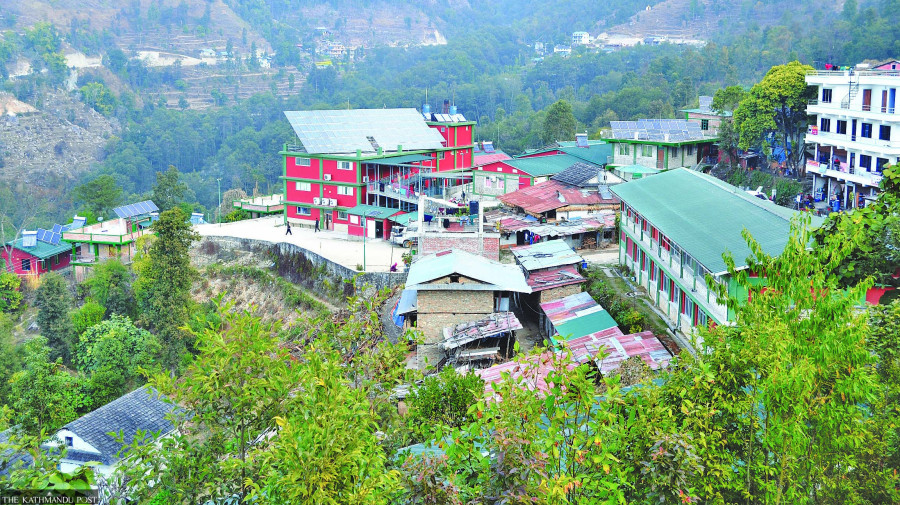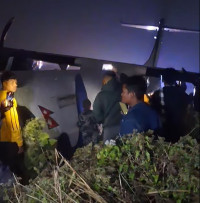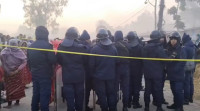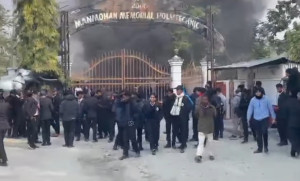Koshi Province
Tropical diseases detected in high-altitude places
Several dengue, scrub typhus and Kala-azar cases have been reported in the high hill districts of Okhaldhunga and Kalikot in recent years, health workers say.
Kumbharaj Rai
Netra Bahadur Nembang of Bhairabtol in Siddhicharan Municipality-12, Okhaldhunga, suffered from an unusually high fever last month. In his feeble state, he took himself to Okhaldhunga Community Hospital in the district headquarters to get himself checked. Health workers at the hospital confirmed dengue. Nembang, who had not left his settlement in the last few months, was surprised to hear the diagnosis.
“I still can’t believe I was infected with dengue during the winter months in a cold place,” said Nembang. Nembang is currently recuperating at home after he got discharged from the hospital.
“My neighbour was also infected with dengue in November,” he said. “It’s quite perplexing.”
According to Phadindra Dani, the statistic officer at Okhaldhunga Community Hospital, this is the first time that dengue has been detected in the district.
“Eight dengue patients have visited the hospital for treatment since July. Six of them were infected with the disease in the cold months of November and December,” said Dani.
Dengue is a mosquito-borne disease that is transmitted by female Aedes aegypti and Aedes albopictus mosquitoes and it is more prevalent in the southern plains. However, cases of dengue have been reported in several high hill districts in the last few years.
Aside from dengue cases, Okhaldhunga Bazaar, the district headquarters of Okhaldhunga in Province 1 that lies at an altitude of around 1,500 metres, has reported several other tropical diseases in recent years.
Five cases of scrub typhus, a mite-borne bacterial infectious disease, were reported in the district in 2020. The number of cases, according to the District Health Office, climbed to 15 this year.
“We cannot ascertain whether the mosquitoes are native to high altitude places or they arrive from other places. It could also be that the infected people might have caught the disease while travelling to warmer climates,” said Maheshwor Gosain, a doctor at Okhaldhunga Community Hospital.
Kala-azar, another vector-borne disease generally found in Tarai districts, has also been taking its toll in Okhaldhunga district for the past few years. The disease had been detected in a man from Richuwa of Manebhanjyang Rural Municipality-5 five years ago.
According to the District Health Office, as many as 74 people were infected with Kala-azar in the past three years in Okhaldhunga district and 64 of them were from Manebhanjyang alone.
Bishworaj Dahal, the health unit chief of Manebhanjyang, says Kala-azar was detected at ward 5 for the first time five years ago but it has now spread to six other wards as well.
“The disease is spreading in higher altitude settlements every year,” he said.
Health workers warn that Kala-azar is turning into an epidemic in Manebhanjyang. In its effort to control the spread of the disease, the local unit disinfects the affected areas twice a year but it is not enough, they say.
“We are trying our best to control the spread of the disease. But we will need bigger programmes from the federal and provincial governments to control the disease,” said Dahal.
The federal government provides Rs 7,000 each to Kala-azar patients for treatment. A budget of Rs 100,000 meant for Kala-azar patients was released to the District Health Office in the last fiscal year.
“We could provide the treatment expense to only 14 Kala-azar patients. Twenty-five other patients have been deprived of the treatment expense. We asked for an additional budget from higher authorities but it is yet to be released,” said Naresh Yadav, the focal person at the District Health Office.
According to the Health Directorate of Province 1, Nepal plans to eradicate Kala-azar from the country by 2025.
“There are several challenges in our efforts to contain the disease in Okhaldhunga and Kalikot districts. Efforts are underway to launch various programmes like disinfecting the affected places, organising awareness campaigns and distributing mosquito nets, among others. We will implement the programmes soon,” said Gyan Bahadur Basnet, chief at the Health Directorate.




 16.57°C Kathmandu
16.57°C Kathmandu














